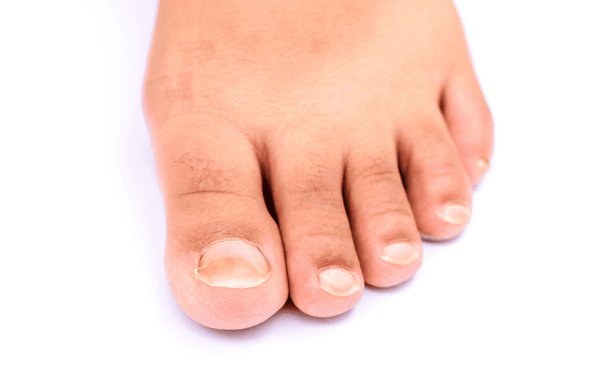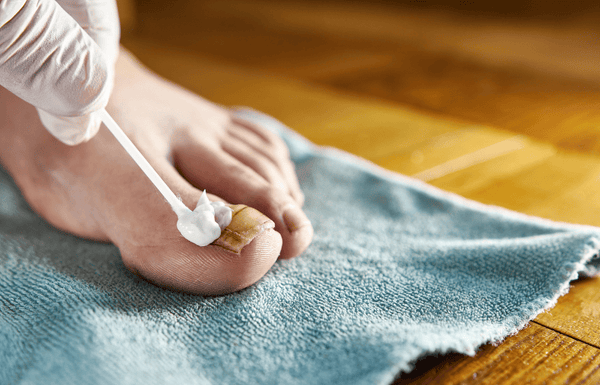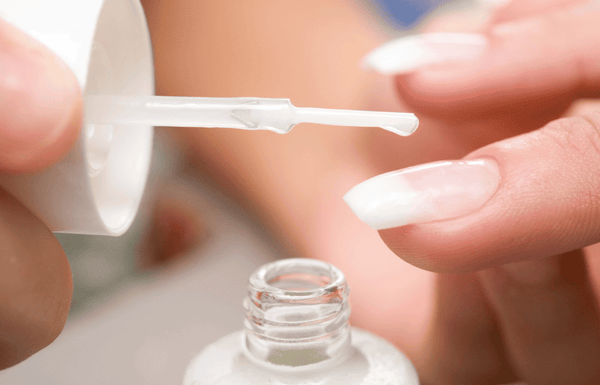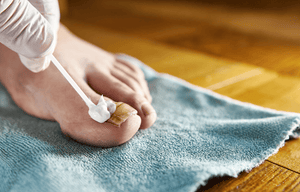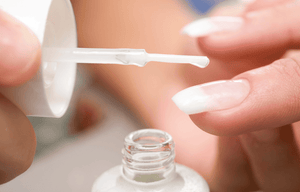
Many people are familiar with over-the-counter solutions for athlete's foot, and the symptoms can sometimes appear similar on the hands.
But is it safe and effective to use athlete's foot cream on your hands?
Read on to learn more about the nuances of fungal infections on both feet and hands, and active ingredients in common antifungal cream products. We’ll detail when it’s appropriate and when it’s not to extend your athlete’s foot treatment to your hands.
Understanding Fungal Infections: Feet vs. Hands
Fungal infections in humans, regardless of location, are usually caused by dermatophytes, a fungi that thrive in warm, moist environments and feed on keratin found in skin, hair, and nail beds.
Athlete's foot, aka tinea pedis, is perhaps the most well-known fungal skin infection, commonly affecting spaces between the toes, the soles of the feet, and even toenail beds.
Symptoms often include itching, burning, stinging, redness, cracking, peeling, and sometimes blisters. It's highly contagious and often contracted in public places like locker rooms, swimming pools, and showers.
Hand fungus, aka tinea manuum, is less common than athlete's foot but shares many similarities with its foot-based relative. The most frequent cause of tinea manuum is the spread of infection from the feet.
People often touch their infected feet or socks, inadvertently transferring fungal spores to their hands. This is why it often affects only one hand, particularly the dominant hand, or starts on one hand before spreading to the other or back to the feet.
Common symptoms of skin fungus on the hands (tinea manuum) include:
- Dry, flaky skin
- Itching
- Redness
- Thickened or scaly skin
- Blisters
- Ring-like rash
If you have athlete's foot, you must treat it diligently to prevent it from migrating to other parts of your body, especially your hands. Wearing socks and shoes and washing hands thoroughly after touching your feet can help prevent transmission.
What’s in Foot Fungus Cream?
When you pick up an antifungal cream from the pharmacy aisle for athlete's foot treatment, you'll typically find one of a few common active ingredients.
These are generally broad-spectrum antifungals, meaning they are effective against a range of fungal organisms, including dermatophytes. The most common antifungal ingredients include:
- Clotrimazole
- Terbinafine
- Miconazole
These ingredients work by disrupting the fungal cell's structure or metabolic processes, thereby stopping the fungus from growing and multiplying. This allows the immune system to clear the infection.
These active ingredients are FDA-approved for general skin use for various superficial fungal infections, not solely confined to the feet. They’re made to effectively target the fungal organisms themselves, regardless of the specific body part they're inhabiting.
Can You Safely Use It on Your Hands?
The short answer is: Yes, in most cases, you can safely use foot fungus cream on your hands. As long as the active ingredients are appropriate for common skin fungal infections and the product label does not specify otherwise, you’re in the clear. Since hand fungus is often caused by the same types of dermatophytes responsible for athlete's foot, the broad-spectrum antifungal agents found in foot fungus cream are typically effective for treating tinea manuum. However, check the product label carefully. Some specialized formulations might contain ingredients unique to foot conditions, like strong deodorizers that might not be ideal for hand application. If you have any doubts, consult a pharmacist; he or she can quickly confirm the suitability of the cream for your specific symptoms. Here are some tips for safe and effective use of antifungal cream for hand fungus:
- Apply a thin layer.
- Follow directions, especially for the duration of treatment.
- Avoid contact with eyes or open wounds.
- Wash hands before and after use (unless treating the hands).
- Be consistent.
When It’s Not Enough
While over-the-counter antifungal cream can be highly effective for many cases of skin fungus, sometimes professional medical attention is warranted. A medical professional can accurately diagnose the type of infection, rule out other skin conditions that mimic fungal rashes, and prescribe stronger antifungal cream, oral antifungals, or other treatment for fungus on hands and fingers. You should consult a dermatologist or podiatrist if you observe any of the following signs:
- Spreading rash: If the rash is rapidly expanding or affecting a large area.
- Cracked or bleeding skin: This can indicate a more severe infection or increased risk of bacterial superinfection.
- No improvement after 2 weeks: If symptoms haven't started to improve after two weeks of consistent over-the-counter treatment, this might suggest a more resistant fungus, a deeper infection, or even a misdiagnosis.
- Pain, excessive redness, or pus: These could be signs of a secondary bacterial infection requiring antibiotics.
- Nail bed involvement: Over-the-counter creams are often insufficient if the fungal infection has spread to your fingernail or toenail beds.
- Recurrent infections: If the fungus keeps coming back despite seemingly successful treatment.
- Compromised immune system: Individuals with diabetes, HIV/AIDS, or those undergoing chemotherapy are more susceptible to severe or persistent infections.
Preventing Spread and Reinfection
1. Don't share towels or creams.
Fungi are contagious. Keep personal items like towels, washcloths, and even your antifungal cream tube separate from others.
2. Wash socks, gloves, and hand towels regularly.
Fungi thrive in damp fabrics. Wash these items in hot water and consider using a fungicidal laundry additive, especially for socks.
3. Treat both hands and feet if needed.
For topical medications, it may take several months to a year of consistent daily application to see improvement, as the healthy nail bed grows in and replaces the damaged portion.
4. Keep skin clean and dry.
Fungi love moisture. After washing, thoroughly dry your hands and feet, especially between the fingers and toes.
5. Wear breathable footwear and gloves.
Opt for cotton socks and leather shoes that allow your feet to breathe. If your hands are often moist due to work or activity, consider breathable gloves or frequent hand washing and drying.
6. Sanitize your shoes.
Consider using antifungal sprays or powders inside your shoes, particularly athletic shoes, to kill any lingering spores.
Wrap-Up
For many common cases of hand fungus, like athlete's foot, using a standard over-the-counter foot fungus cream can be a safe and effective initial approach. The active ingredients like clotrimazole, terbinafine, and miconazole are designed to combat a broad spectrum of dermatophytes responsible for these infections. Always remember to check the product label for specific instructions and warnings, and follow the treatment regimen diligently for the prescribed duration, even if symptoms improve quickly. However, if your symptoms are severe, spreading rapidly, involve your nail beds, or do not show improvement after a couple of weeks of self-treatment, seek medical advice. A dermatologist or podiatrist can provide an accurate diagnosis, rule out other conditions, and prescribe stronger antifungal cream or oral medications if necessary.
